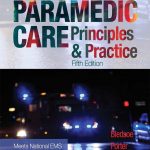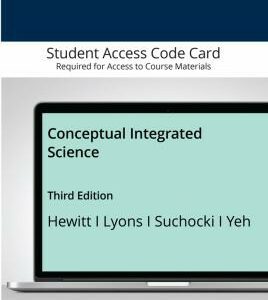Paramedic Care
$106.65
| Title | Range | Discount |
|---|---|---|
| Trade Discount | 5 + | 25% |
- Description
- Additional information
Description
For courses in Paramedic Emergency Medical Services
A strong, evidence-based foundation in the principles and practices of modern EMS
Paramedic Care: Principles & Practice, Fifth Edition, offers EMS students and professionals a foundational guide and reference to paramedicine. Developed to stay ahead of current trends and practices, all five volumes are based on the National EMS Education Standards and the accompanying Paramedic Instructional Guidelines.
Volume 4, Trauma Emergencies, covers the anatomy, physiology, and pathophysiology of trauma as well as the various types of trauma based on the body systems involved. The Fifth Edition includes an increased emphasis on trauma prevention, the most recent research on mechanism of injury, hemorrhage, and shock, and information about the military-type gunshot wounds that are now occurring more often in the civilian sector.
Also available with MyBRADYLab™
This title is also available with MyBRADYLab—an online homework, tutorial, and assessment program designed to work with this text to engage students and improve results. Within its structured environment, students practice what they learn, test their understanding, and pursue a personalized study plan that helps them better absorb course material and understand difficult concepts.
Students, if interested in purchasing this title with MyBRADYLab, ask your instructor for the correct package ISBN and Course ID. Instructors, contact your Pearson representative for more information.
BRYAN E. BLEDSOE, DO, FACEP, FAAEM, EMT-P
Dr. Bryan Bledsoe is an emergency physician, researcher, and EMS author. Presently he is Professor of Emergency Medicine and Director of the EMS Fellowship program at the University of Nevada School of Medicine and an Attending Emergency Physician at the University Medical Center of Southern Nevada in Las Vegas. He is board-certified in emergency medicine. Prior to attending medical school, Dr. Bledsoe worked as an EMT, a paramedic, and a paramedic instructor. He completed EMT training in 1974 and paramedic training in 1976 and worked for six years as a field paramedic in Fort Worth, Texas. In 1979, he joined the faculty of the University of North Texas Health Sciences Center and served as coordinator of EMT and paramedic education programs at the university.
Dr. Bledsoe is active in emergency medicine and EMS research. He is a popular speaker at state, national, and international seminars and writes regularly for numerous EMS journals. He is active in educational endeavors with the United States Special Operations Command (USSOCOM) and the University of Nevada at Las Vegas. Dr. Bledsoe is the author of numerous EMS textbooks and has in excess of 1 million books in print. Dr. Bledsoe was named a “Hero of Emergency Medicine” in 2008 by the American College of Emergency Physicians as a part of their 40th anniversary celebration and was named a “Hero of Health and Fitness” by Men’s Health magazine as part of their 20th anniversary edition in November of 2008. He is frequently interviewed in the national media. Dr. Bledsoe is married and divides his time between his residences in Midlothian, TX, and Las Vegas, NV.
RICHARD A. CHERRY, MS, EMT-P
Richard Cherry is a Training Consultant for Northern Onondaga Volunteer Ambulance (NOVA) in Liverpool, New York, a suburb of Syracuse. He is also a program reviewer for The Continuing Education Coordinating Board for Emergency Medical Services (CECBEMS). He formerly held positions in the Department of Emergency Medicine at Upstate Medical University as Director of Paramedic Training, Assistant Emergency Medicine Residency Director, Clinical Assistant Professor of Emergency Medicine, and Technical Director for Medical Simulation. His experience includes years of classroom teaching and emergency fieldwork. A native of Buffalo, Mr. Cherry earned his bachelor’s degree at nearby St. Bonaventure University in 1972. He taught high school for the next ten years while he earned his master’s degree in education from Oswego State University in 1977. He holds a permanent teaching license in New York State.
Mr. Cherry entered the emergency medical services field in 1974 with the DeWitt Volunteer Fire Department, where he served his community as a firefighter and EMS provider for more than 15 years. He took his first EMT course in 1977 and became an ALS provider two years later. He earned his paramedic certificate in 1985 as a member of the area’s first paramedic class. He then worked both as a paid and volunteer paramedic for the next 15 years.
Mr. Cherry has authored several books for Brady. Most notable are Paramedic Care: Principles & Practice, Essentials of Paramedic Care, Intermediate Emergency Care: Principles & Practice, and EMT Teaching: A Common Sense Approach. He has made presentations at many state, national, and international EMS conferences on a variety of EMS clinical and teaching topics. He and his wife, Sue, reside in Sun City West, Arizona. In addition to riding horses, hiking, and playing softball, they volunteer their time at Banner Del Webb Medical Center. Mr. Cherry also plays lead guitar in a Christian band.
Paramedic Care: Principles & Practice, Fifth Edition
Offers updated coverage of the latest guidelines, standards, current trends and practices in paramedicine
- UPDATED: Chapter 1, “Trauma and Trauma Systems,” places emphasis on the evolving role of prevention of trauma in EMS, as preventing trauma is easier and less costly than treating trauma. There is emphasis on evaluating for possible spine injury and deciding, based on spinal protocols, which patients require spinal precautions.
- UPDATED: Chapter 2, “Mechanism of Injury,” discusses both blunt trauma and penetrating trauma, which were separate chapters in the prior edition. There is a new section on hybrid vehicles and the dangers they present during collision analysis: electrocution and unexpected movement. A new section on quaternary blast injuries has been added to the discussion of blast injuries.
- UPDATED: Chapter 3, “Hemorrhage and Shock,” includes a discussion of the recently increased use of tourniquets with emphasis on their dangers and their use only as a last resort. A new section introduces the drug tranexamic acid (TXA) as an antifibrinolytic that can mitigate deterioration of the blood clotting system that occurs with some trauma, reducing trauma mortality especially during long transport times. There is expanded information on fluid resuscitation for patients in hypovolemic shock and the varied responses that can be expected. Text regarding the pneumatic anti-shock garment (PASG) has been deleted; its use is no longer recommended.
- UPDATED: Chapter 6, “Head, Neck, and Spinal Trauma,” combines two formerly separate chapters on head, face, neck, and spine injury and on nervous system trauma.
- UPDATED: Chapter 8, “Abdominal and Pelvic Trauma,” expands information about gunshot wounds to address, especially, high-velocity military-type gunshot wounds that are now occurring more often in civilian settings. Text regarding the pneumatic anti-shock garment (PASG) has been deleted; its use is no longer recommended.
- UPDATED: Chapter 9, “Orthopedic Trauma,” removes references to nontraumatic injuries as they are covered in the medical chapter “Nontraumatic Musculoskeletal Disorders” (Volume 3, Chapter 13)
- UPDATED: Chapter 11, “Special Considerations in Trauma,” revises the spinal precautions Section to de-emphasize automatic full spinal immobilization and to emphasize the range of spinal precautions based on the NEXUS criteria, the Canadian C-Spine rule, or similar protocols.
- Trauma and Trauma Systems
- Mechanism of Injury
- Hemorrhage and Shock
- Soft-Tissue Trauma
- Burns
- Head, Neck, and Spinal Trauma
- Chest Trauma
- Abdominal and Pelvic Trauma
- Orthopedic Trauma
- Environmental Trauma
- Special Considerations in Trauma
For courses in Paramedic Emergency Medical Services
A strong, evidence-based foundation in the principles and practices of modern EMS
Paramedic Care: Principles & Practice, Fifth Edition, offers EMS students and professionals a foundational guide and reference to paramedicine. Developed to stay ahead of current trends and practices, all five volumes are based on the National EMS Education Standards and the accompanying Paramedic Instructional Guidelines.
Volume 4, Trauma Emergencies, covers the anatomy, physiology, and pathophysiology of trauma as well as the various types of trauma based on the body systems involved. The Fifth Edition includes an increased emphasis on trauma prevention, the most recent research on mechanism of injury, hemorrhage, and shock, and information about the military-type gunshot wounds that are now occurring more often in the civilian sector.
Also available with MyBRADYLab™
This title is also available with MyBRADYLab—an online homework, tutorial, and assessment program designed to work with this text to engage students and improve results. Within its structured environment, students practice what they learn, test their understanding, and pursue a personalized study plan that helps them better absorb course material and understand difficult concepts.
Note: You are purchasing a standalone product; MyBRADYLab does not come packaged with this content. Students, if interested in purchasing this title with MyBRADYLab, ask your instructor for the correct package ISBN and Course ID. Instructors, contact your Pearson representative for more information.
Paramedic Care: Principles & Practice, 5th Edition
Offers updated coverage of the latest guidelines, standards, current trends and practices in paramedicine
- UPDATED: Chapter 1, “Trauma and Trauma Systems,” places emphasis on the evolving role of prevention of trauma in EMS, as preventing trauma is easier and less costly than treating trauma. There is emphasis on evaluating for possible spine injury and deciding, based on spinal protocols, which patients require spinal precautions.
- UPDATED: Chapter 2, “Mechanism of Injury,” discusses both blunt trauma and penetrating trauma, which were separate chapters in the prior edition. There is a new section on hybrid vehicles and the dangers they present during collision analysis: electrocution and unexpected movement. A new section on quaternary blast injuries has been added to the discussion of blast injuries.
- UPDATED: Chapter 3, “Hemorrhage and Shock,” includes a discussion of the recently increased use of tourniquets with emphasis on their dangers and their use only as a last resort. A new section introduces the drug tranexamic acid (TXA) as an antifibrinolytic that can mitigate deterioration of the blood clotting system that occurs with some trauma, reducing trauma mortality especially during long transport times. There is expanded information on fluid resuscitation for patients in hypovolemic shock and the varied responses that can be expected. Text regarding the pneumatic anti-shock garment (PASG) has been deleted; its use is no longer recommended.
- UPDATED: Chapter 6, “Head, Neck, and Spinal Trauma,” combines two formerly separate chapters on head, face, neck, and spine injury and on nervous system trauma.
- UPDATED: Chapter 8, “Abdominal and Pelvic Trauma,” expands information about gunshot wounds to address, especially, high-velocity military-type gunshot wounds that are now occurring more often in civilian settings. Text regarding the pneumatic anti-shock garment (PASG) has been deleted; its use is no longer recommended.
- UPDATED: Chapter 9, “Orthopedic Trauma,” removes references to nontraumatic injuries as they are covered in the medical chapter “Nontraumatic Musculoskeletal Disorders” (Volume 3, Chapter 13)
- UPDATED: Chapter 11, “Special Considerations in Trauma,” revises the spinal precautions Section to de-emphasise automatic full spinal immobilisation and to emphasise the range of spinal precautions based on the NEXUS criteria, the Canadian C-Spine rule, or similar protocols.
Keeps students on track with their reading and understanding of the content
- Chapter-opening Objectives keep students focused on learning the core concepts covered in the chapter.
- Key Terms with page references showing where they first appear help students master new terminology.
- A Case Study draws students into the reading and creates a link between the text content and real-life situations and experiences.
Supports visual learning and reinforces concepts
- Tables and Illustrations throughout every chapter provide visual support to enhance understanding.
- Procedure Scans illustrate step-by-step how to perform core skills.
- Patient Care Algorithms offer graphical pathways that integrate assessment and care procedures.
Provides critical-thinking opportunities for students throughout the text
- You Make the Call features promote critical thinking by requiring students to apply principles to actual practice.
- Patho Pearls offer a snapshot of pathological consider
Additional information
| Dimensions | 0.80 × 8.60 × 11.00 in |
|---|---|
| Series | |
| Imprint | |
| Format | |
| ISBN-13 | |
| ISBN-10 | |
| Author | |
| Subjects | higher education, paramedic, Vocational / Professional Studies, Health Professions, Brady Paramedic |




